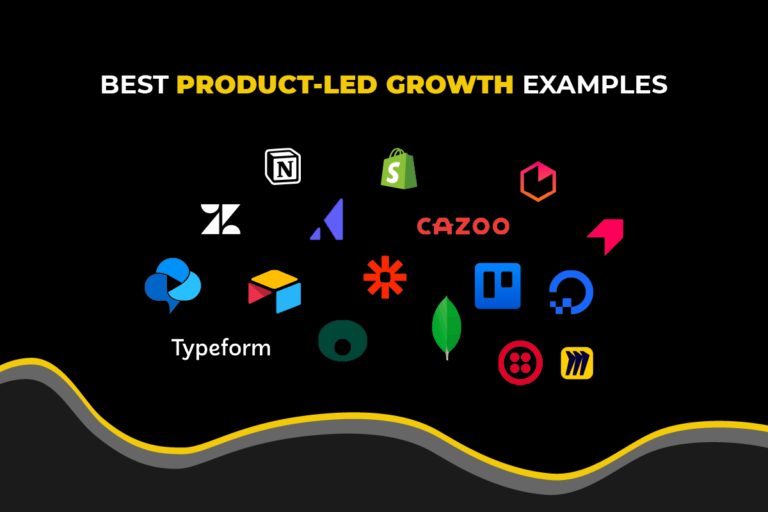We asked 600+ SaaS businesses to learn the state of product-led growth.
Specifically, we looked at:
- How many companies are adopting a PLG model
- Which free model converts the best
- The role of PQLs
- What a product-led organization looks like
- And more
This post digs into the data.
Let's go.
Here is a Summary of Our Key Findings:
- A majority of B2B SaaS companies have already deployed a Product-Led Growth motion: 91% of these companies are planning to invest more in PLG initiatives this year.
- Free Trials are the most popular choice for companies in their first stage of product-led growth. When companies first take the leap to become product-led, 75% of them either choose a free trial or freemium model.
- Overall, 9% of free accounts convert to paid accounts. Products with an Annual Contract Value (ACV) of $1K - $5K have the highest conversion rate at 10% (median), while products in the < $1K experience the highest conversion rate in the top quartile at 24% (median).
- Product and Marketing functions lead the PLG strategy: Companies with a PLG motion report that Product is involved in creating the PLG strategy 49% of the time, while Marketing is involved 42% of the time.
- Free account support is led by Customer Success: Only 6% of companies report having a Products Operations function responsible for free user assistance.
- Free to paid account conversion is led by Sales: Sales is responsible for converting free accounts to paid ones in 23% of companies, while the Product team is next.
- When PQLs are used the conversion rate for free accounts is 3x higher: Only 25% of companies report using Product Qualified Leads (PQLs) to identify the free accounts most likely to convert to paid accounts.
91% of companies plan to increase their product-led growth investment
A majority of B2B SaaS companies have already deployed a product-led growth motion – it exists in 58% of companies surveyed.
Of those who do have a PLG strategy in place, 91% of them plan to increase their investment in 2022.
Of those, 47% plan to double their investment.
“Free products have never had a more ripe environment to spread like wildfire. With the rise of privacy laws and record-breaking investments in SaaS, customer acquisition costs are going to
- Wes Bush
jump up for many companies.”
Almost all companies are planning to implement PLG strategies this year, with 39% of them researching ways to implement it.
Those who don’t have a PLG motion in place cite product readiness as the main reason, and 24% list product complexity as their main barrier to adopting the model.
Free Trials are the most popular choice for companies in their first stage of product-led growth
When companies first take the leap to become product-led, 75% of them either choose a free trial or freemium model.
But freemium accounts convert at a much higher rate than free trials for visitors – at 12% conversion (at the median), which is a whopping 140% higher than free trial conversion rates. This isn’t too surprising since freemium is typically more compelling to the average user.
But in terms of converting users into paid customers, all models convert at the same rate – on average 9%. Products with an Annual Contract Value (ACV) of $1K - $5K have the highest conversion rate to paid accounts at 10% (median)
It’s critical to understand the product signals that directly impact free account conversion.
Product Signals like:
- Activation points
- High-value feature unlocks
- Usage profile
- “Aha!” moment experiences
Product and Marketing teams lead the PLG strategy
Product-led growth is a team sport. Departamental cross-collaboration is the first step in reaching PLG maturity, and it’s the biggest glaring opportunity for companies.
Almost half with a PLG motion report that the Product team is involved in creating the strategy, and 42% involve the Marketing team.
In terms of converting paid accounts, Product is involved 28% of the time, while Sales is involved 25% of the time.
But in terms of upsells, Product is only responsible 10% of the time, while Sales and Customer Success collectively represent 58% of the upsell responsibility.
Free account support is led by Customer Success
When adopting a PLG motion, customer support becomes a bigger responsibility. In terms of roles in a product-led organization responsible for it, 26% reported Customer Success is responsible with 18% of Product being responsible.
Conversely, only 6% reported Product Operations was responsible for free user assistance.
Free-to-paid account conversion is led by Sales
Sales is responsible for converting free accounts to paid accounts in 23% of companies, while Customer Success is 15% of companies.
Product Ops, however, is only at 3%.
This is interesting because we would expect this to be much higher on their priority list; Product Ops is a role designed to aid a company’s cross-functional product team to operate as effectively as possible.
To really make an impact with PLG, companies need alignment inside their company.
Product Qualified Leads remain an untapped opportunity
Free trials using Product Qualified Leads (PQLs) convert to paid customers on average 25% of the time.
Only 24% of product-led companies report using PQLs. This is surprising, as it shows a lot of companies aren’t prioritizing user success within the product. It should be a top priority because it is a unifying metric for product-led companies.
Common reasons why PQL’s remain untapped:
- Not every company needs a PQL. For example, if you have a very short sales cycle and low contract value, you might not monitor this metric.
- They are simply being labeled as something else other than a PQL (i.e. Tier 1 Lead).
When used, PQLs convert 30% of the time for businesses with $1,000 to $5,000 average contract value (ACV). It gets even better for ACVs between $5,000 to $10,000 products, where they convert 39% of the time.
Compared to only a 9% conversion rate (median) from free accounts to paid accounts, companies using PQLs see better results and improved sales opportunities.
The majority of companies are not effectively tracking PLG metrics
For PLG companies, the main product metrics tracked are:
- Daily Avg User (DAU)
- Weekly Avg. User (WAU)
- Monthly Avg. User
- NPS
- Feature Scoring
- Activation Points
Activations are tracked 34% of the time. This is a prime metric to understand if the free user is experiencing value from the product, and signals that most product-led companies are not effectively tracking their product metrics.
In Conclusion
We’d like to thank Gainsight and RevOps for their partnership with this report. This study would have not have been possible without them.
Learn More: Enroll in ProductLed Academy or Read the Book on Product-Led Growth for free
Today, choices are endless, and the buyer has all the control. As buyers, we’re tired of jumping through hoops to get from Point A to Point B in a sales cycle.
Whether you’re selling perfume or software, trying out a product is and always will be an essential part of the buying process. As you can see from this report, consumers demand it. Companies that embrace product-led growth align their business model with an undeniable and enduring consumer trend.
ProductLed Academy is a 12-month coaching program, where you'll work directly with Wes Bush to master each of the nine components of a successful product-led business (we spend around six weeks on each of these topics):
- Vision: What is your company really good at?
- User: Who do you serve best?
- Model: How do you create a ton of value for your users to win?
- Offer: Have you crafted an irresistible free offer for your ideal users?
- Experience: Have you created an effortless path to value for your users?
- Pricing: Is it easy for users to upgrade without talking to anyone?
- Data: Do you know where users are getting stuck in your product?
- Process: Do you have a growth process that enables your team to build out experiments, prioritize the high-impact ones, and launch the ones that are easiest?
- Team: Is your team full of A players capable of taking you to the next level?
While you can have one or more of these dialed in perfectly, if you’re missing one of these key players, you’re going to have a hard time with growth.
Apart from focusing on those key areas of your strategy, ProductLed Academy comes with:
- Weekly 60-minute group coaching call with Wes Bush, where you'll go through each of the components of the ProductLed Method (including pricing) to master a self-serve model.
- Weekly non-negotiable tasks to keep you accountable.
- Access to an exclusive ProductLed Founder Community so you can meet other ambitious founders and receive support 24/7.
- Access to the ProductLed Vault, where you'll gain access to all of our programs (including ProductLed Acquisition and Accelerator), templates, and frameworks.
If you're ready to break through to the next level and master product-led growth, be sure to check out ProductLed Academy.
Or if you're interested in reading more on the topic, be sure to read my bestselling book: Product-Led Growth: How to Build a Product That Sells Itself. You can read it for free here.







